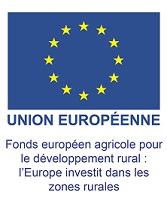Traditionally, in western France, the fruitiest cider apple juices (or pomaces) were laced with cider brandy so as to preserve their flavour throughout the year.
This operation, known as "mutage", was done on the quiet on the family farm and for centuries the method was a closely guarded secret, and the result the local aperitif, called Pommeau (as in "pomme", meaning apple).
In the seventies, a certain number of producers adopted a definitve elaboration method and decided to name and promote it as "Pommeau de Normandie". However, having no legal existence, it was unsaleable. Until, that is, it was granted a dispensation in 1981, enabling it to come on the market.
The following year the Association Nationale Interprofessionnelle des Producteurs de Pommeau (ANIPP) was set up. By that time, there were 15 producers producing 12,000 bottles. Two years on, sales had risen to 150,000 bottles.
In 1986, the conditions for producing Pommeau de Normandie were set out in an official order and it obtained its Appellation d’Origine Contrôlée (AOC) status on April 10, 1991.
Meanwhile, producers in Brittany were doing research in order to typify and characterize their Pommeau. They selected the best cider apple varieties and defined its specifications. Pommeau de Bretagne obtainedd the AOC status by official order on May 31, 1997 and Pommeau du Maine obtained on October 29, 2009.
Pommeau mobilize today large houses as well as small producers.
In 2018, more than 600 000 bottles were marketed by a hundred operators.

